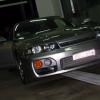Help somethink wrong
Announcements
-
Similar Content
-
Latest Posts
-
I'm in Japan and could help out assuming whatever it was you needed could fit within EMS maximum dimensions? I've shipped items to HK for customers before (although not car parts).
-
Hmm. You might be right. @sinn3r, please post up more photos. Xtreme closeup of this side and the other side.
-
Need to see other side of PCB in that area...ie; I don't see any thru-hole mounting, just soldered vias (smd zeners in SOT23 have 3 legs but only 2 are used, as reflected by PCB tracks)
-
4 to 5 is fine. It will be slow, but that's better than blowing turbos. I don't have a PS pump idle up solenoid on my car, because... I think when we put the Neo in we retained my R32 lines. But.... From inspecton of the R34 vacuum hose diagram, you can see that the solenoid needs to be connected to the turbo inlet as source of clean air) and the plenum (as source of vacuum - which is the place for the air to flow to to cause the idle to increase). So 3 to 1 is VERY WRONG. 3 should go to either the turbo inlet, or the plenum. Follow the other hose from the PS solenoid and if it goes to the plenum, then your 3 goes to 2 2 would also serve as a bleed port for a boost solenoid.
-
Pull them out and pull more apart. You can't do shit with them still bolted to the floor of the car.
-




Recommended Posts
Create an account or sign in to comment
You need to be a member in order to leave a comment
Create an account
Sign up for a new account in our community. It's easy!
Register a new accountSign in
Already have an account? Sign in here.
Sign In Now